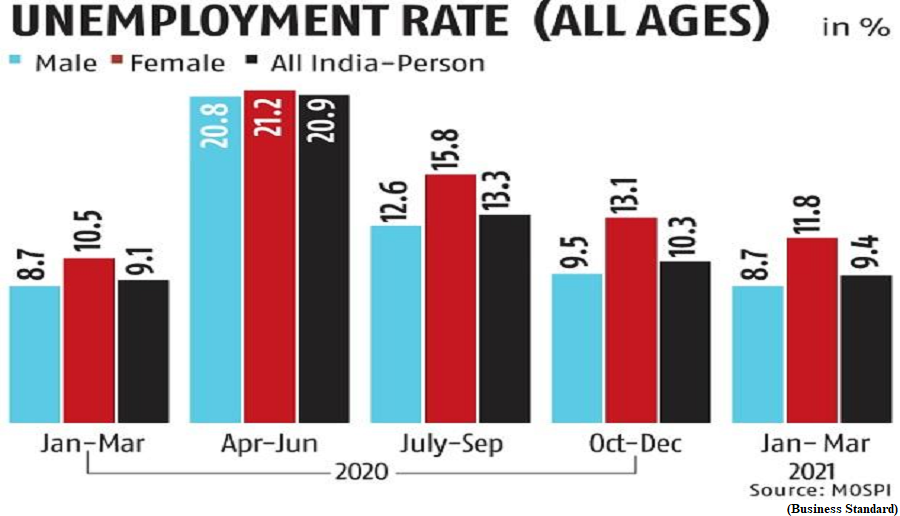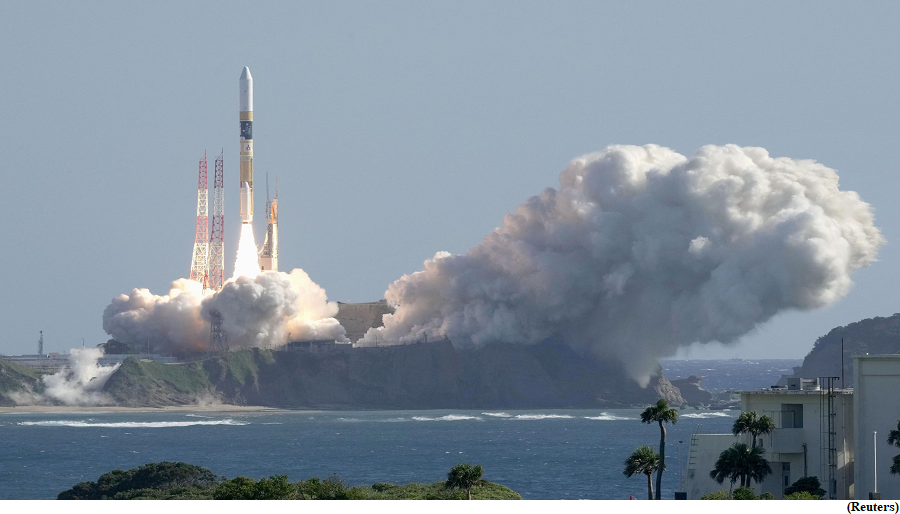How unemployment is measured (GS Paper 3, Economy)

Context:
- When the Periodic Labour Force Survey (PLFS) was released in 2017, it revealed the unemployment rate of India to be 6.1%, the highest ever recorded in India.
- The PLFS of 2021-22 showed unemployment reducing to 4.1%, much lower than before, but higher than some developed economies. The U.S unemployment rate fluctuated between 3.5% in July 2022 to 3.7% in July 2023.
Defining unemployment:
- Unemployment is not synonymous with joblessness.
- The International Labour Organization (ILO) defines unemployment as being out of a job; being available to take a job; and actively engaged in searching for work. Therefore, an individual who has lost work but does not look for another job is not unemployed.
- The labour force is defined as the sum of the employed and the unemployed. Those neither employed nor unemployed are considered out of the labour force. The unemployment rate is measured as the ratio of the unemployed to the labour force.
- The unemployment rate could also fall if an economy is not generating enough jobs, or if people decide not to search for work.
- In the U.S., the employment-to-population ratio (EPR) in 2019 was 60.8, while the unemployment rate was 3.7%. In 2022, the EPR was 60, but the unemployment rate had fallen to 3.6%.
- Even though there were fewer jobs (as a proportion of the total population), the unemployment rate was lower because many individuals had exited the labour force.
Measuring unemployment in India:
- The situation is complicated in a developing economy, because decisions to search for work are constrained by social norms.
- According to a 2009-10 survey undertaken by the National Sample Survey Organisation (NSSO), 33.3% of rural women and 27.2% of urban women aged 15 and above who were engaged in domestic work reported willingness to work if it were made available within the premises of the household.
- This represents 18.8% of the rural female population aged 15 and up; the labour force participation rate (LFPR) for rural women that year was 26.5%. These women would not be counted among the unemployed because they are not actively looking for work.
Challenges in India:
- A definition of unemployment that focuses on actively searching for a job may underestimate the true picture in a developing economy.
- Measuring unemployment in India is difficult due to the informal nature of jobs. Unlike developed economies, individuals do not hold one job year-round.
Measures in India:
- The NSSO adopts two major measures for classifying the working status of individuals in India — the Usual Principal and Subsidiary Status (UPSS) and the Current Weekly Status (CWS).
Usual Principal and Subsidiary Status (UPSS):
- An individual’s principal status, whether employed, unemployed or out of the labour force, is based on the activity in which they “…spent relatively long time…” in the previous year.
- A person who is not a worker, according to the principal status, would still be counted as employed according to the UPSS if they were engaged in some economic activity in a subsidiary role for a period “…not less than 30 days”.
- Thus, an individual unemployed for five months and working for seven months in the previous year would be considered a worker according to the principal status, while an individual unemployed for nine months but working for three months would be counted as employed as per the UPSS.
Current Weekly Status (CWS):
- The CWS adopts a shorter reference period of a week. An individual is counted as being employed if they have worked for “…at least one hour on at least one day during the seven days preceding the date of survey.”
- UPSS unemployment rates will always be lower than CWS rates because there is a greater probability that an individual would find work over a year as compared to a week.
Why unemployment rates are lower in rural areas than urban?
- In agrarian economies, where individuals have access to family farms or some form of casual agrarian work, there is greater probability of finding some kind of work when compared to urban areas. These definitions may ‘underestimate’ unemployment, but they were largely designed to capture the extent of the informal economy.
- The Centre for Monitoring Indian Economy classifies individuals based on their activity in the day preceding the interview. They, therefore, estimate a higher unemployment rate, but lower labour force participation rates.
- This is because in an informal economy, there is a lower chance of an individual having work on any given day as compared to longer periods of a week or a year.
The lockdown effect:
- The lockdown announced in March 2020 was a profound disruption to the Indian economy. But this wasn’t reflected in the PLFS unemployment rates, which covers a period between July of one year to June of the next.
- The lockdown would have been covered in the last quarter of the 2019-20 PLFS, its after-effects seen in the 2020-21 PLFS. However, unemployment rates fell in 2019-20 and 2020-21.
- Consider an individual with regular employment who loses work in March 2020. According to the UPSS status, this individual would be considered employed, since they spent most of the previous year employed.
- If those individuals who lost jobs during the lockdown find employment in a time less than six months, they would never be counted as unemployed by the UPSS.
- The CWS criterion, with a shorter reference period, would record higher unemployment rates. However, the measures presented in the PLFS report are an aggregation of interviews conducted across the year.
- If those rendered jobless by the lockdown were able to find employment relatively quickly, the CWS unemployment rate for the lockdown period would show high unemployment, but not so for subsequent periods. When averaging across these different periods, the CWS rate for the entire year would show a lower measure.
Japan launches lunar exploration spacecraft ‘SLIM’
(GS Paper 3, Science and Technology)
Why in news?
- Japan launched its lunar exploration spacecraft aboard H-IIA rocket, clearing a path to become the world's fifth country to land on the moon early next year.
- Japan Aerospace Exploration Agency (JAXA) said the rocket took off from Tanegashima Space Center in southern Japan as planned and successfully released the Smart Lander for Investigating Moon (SLIM).

Details:
- Dubbed the ‘moon sniper’, Japan aims to land SLIM within 100 metres of its target site on the lunar surface. The $100-million mission is expected to reach the moon by February.
H-IIA rocket:
- H-IIA rocket also carries the X-Ray Imaging and Spectroscopy Mission (XRISM) satellite, a joint project of JAXA, NASA and the European Space Agency.
- Mitsubishi Heavy Industries 7011.T manufactured the rocket and operated the launch, which marked the 47th H-IIA rocket Japan has launched since 2001, bringing the vehicle's success rate close to 98 per cent.
Background:
- The launch comes after India became the fourth nation to successfully land a spacecraft on the moon with its Chandrayaan-3 mission to the unexplored lunar South Pole.
- Two earlier lunar landing attempts by Japan failed in 2022. JAXA lost contact with the OMOTENASHI lander and scrubbed an attempted landing in November.
- The Hakuto-R Mission 1 lander, made by Japanese startup ispace 9348.T, crashed in April as it attempted to descend to the lunar surface.
- Japan's space missions have faced other recent setbacks, with the launch failure of the Epsilon small rocket in October 2022, followed by an engine explosion during a test in July.
- The country plans to send astronauts to the moon in the late 2020s.
Telangana government to begin largest district cooling project in Asia
(GS Paper 2, Governance)
Why in news?
- The Telangana government has signed up with Tabreed, a cooling utilities company based out of Abu Dhabi, to change the cooling landscape in the state.
- The partnership will see the development of top-tier cooling infrastructure for industrial and commercial parks, starting with the largest district cooling Public-Private Partnership (PPP) project in Asia, for Hyderabad Pharma City (HPC).

Details:
- Tabreed is set to invest up to $200 million to develop 1,25,000 RT of district cooling plants and networks. This initiative will provide sustainable long-term cooling services through a utility cooling-as-a-service model for process cooling and storage requirements of industrial units.
- It is expected to bring about significant benefits, including superior cost-efficiency, unprecedented economies of scale, and highly reliable solutions.
- It is projected to result in 6,800 GWh of power savings and 41,600 mega litres of water savings, reducing greenhouse gas emissions by saving 6.2 million tons of CO2 over the project's lifetime.
Project in Cyberabad:
- In addition to the HPC project, the state government and Tabreed have signed a Memorandum of Understanding to explore district cooling infrastructure in existing and upcoming commercial districts of Cyberabad and other mixed-use development areas.
- This could potentially reduce over 200 MW of peak electricity demand, resulting in a CO2 reduction of 18 million tons over a 30-year period.
Way Forward:
- By prioritising cooling as a key action area through cool roof policies and energy-efficient district cooling, state is contributing significantly to ambitious vision of making Telangana net-zero by 2047”.




